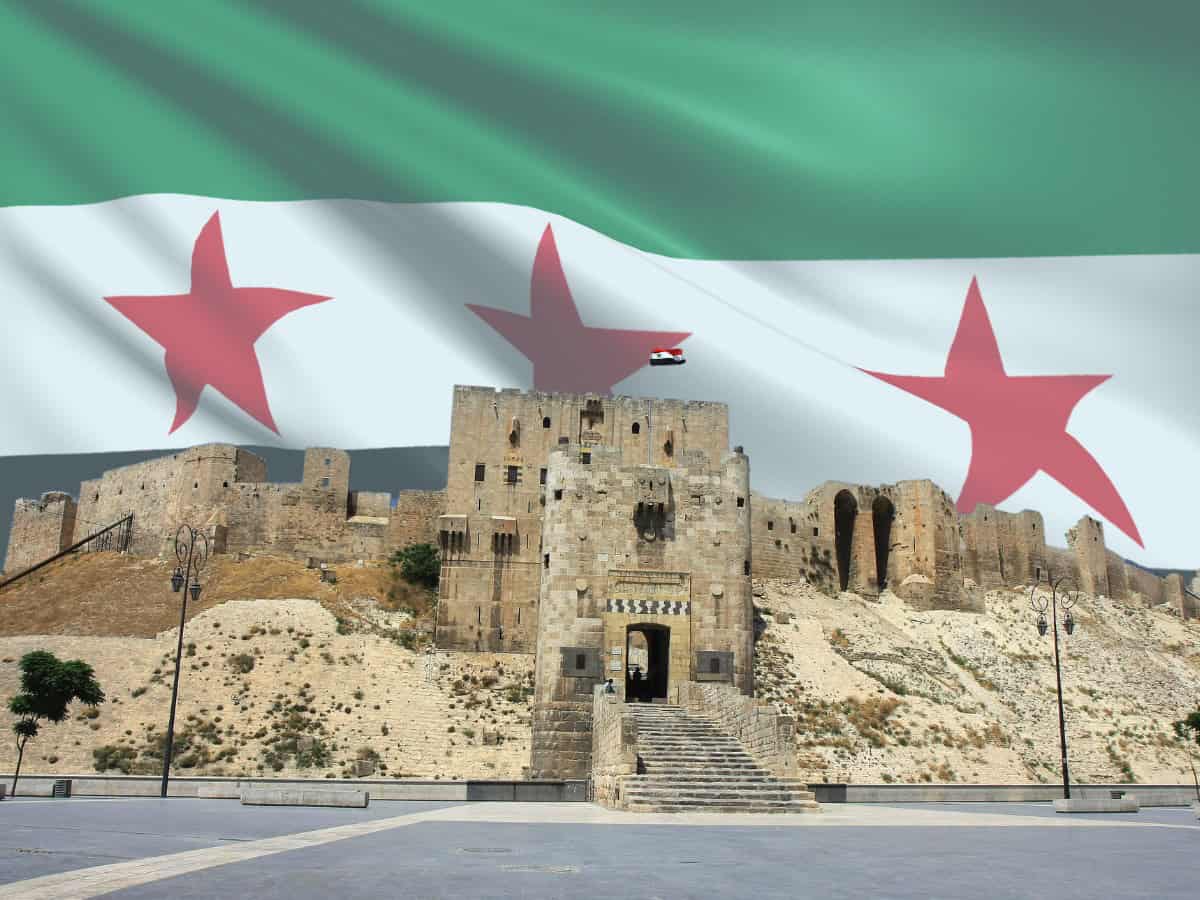
While commenting on one of my articles on recent developments in Syria an educated Sunni Muslim of India, (aged around 70) with having grasp on international affairs said: “You must understand that these Shia hardliners of Iran, if not checked, will even capture Makkah and Madinah.”
But he was rendered speechless when I cut in to ask, “Why have Iranians not succeeded in installing a Shia ruler in nearby Bahrain when they are in majority there? Bahrain is ruled by a dictator belonging to a minority Sunni sect. How is it that the Sunnis, who form an overwhelming population of Saudi Arabia, would allow the Shia minority to occupy the two holiest sites of Islam thousands of kilometers away from the Iranian border? Even in Saudi Arabia Shias have a substantial population on its eastern coast much far away from Hejaz in the west.”
I went on to explain: “Why only Bahrain? Iran could have easily placed a puppet government in its Shia-dominated northern neighbour, Azerbaijan, immediately after the dismemberment of the then-Soviet Union in December 1991. Iran could have exploited the situation that emerged after the collapse of the Communist Soviet Union as the United States was bogged down in Iraq after the first Gulf War of January- February 1991. Instead, Azerbaijan went on to become a trusted friend of Israel, the United States, and Turkey and thus constantly pose a big threat to Tehran.”
Shia phobia
This gentleman was wise enough to understand my point. But this is not the case with all the Sunnis around the world. The exaggerated phobia of Shia expansionism has deliberately been spread since the Iranian Revolution of 1979. As the revolution created a massive upsurge in the region–as it had happened later in the case of the Arab Spring of 2011–the monarchs, especially of Saudi Arabia, tried to deflect the attention of the people by whipping up this anti-Shia passion. The Salafi Ulema (clergy)
more or less convinced of the rulers’ propaganda, which had an impact on the Sunni world.
Gradually, many Sunnis around the world, who hailed the Iranian Revolution, became skeptic of the Shias. The West has a great interest in aggravating the rift therefore its media went all out to magnify the differences. Various international agencies fanned this tension. The Salafi hotheads, as far away as Pakistan, started a witch-hunt against the minority Shias. At several places Shias too responded—but they had some limitations as they were in the minority. Thus, the royal families of the Gulf countries distracted the attention of the masses from their dictatorial rule.
Peaceful existence
But it is also a fact that Shias and Sunnis have been living together peacefully for quite a few centuries. The reality was that in Iraq and Bahrain the Sunnis were in power though they are numerically Shia dominated countries. Iraq would have remained a Sunni-ruled state for some more time had its ruler Saddam Husain not attacked fellow Sunni neighbour, Kuwait, on August 2, 1990. This was so even though Kuwait, like all the Sunni countries of the region, wholeheartedly supported Iraq in its eight-year-long war with Iran (1980-88). It was upon this that the United States-led army came to the rescue of Kuwait and liberated it in 1991.
In 2003, that is after 9/11 the US captured the entire Iraq and dethroned Saddam, who was later executed. Had he not committed the folly of invading Kuwait the Americans would not have come and Iraq would not have become a Shia-ruled country. So, one cannot blame Iran for turning Iraq into a Shia-ruled country.
May sound unbelievable now, but true: During the Yemeni Civil War between 1962 and 1970 Sunni Saudi Arabia and Jordan; Shia Iran (then ruled by Raza Shah) as well as Israel and Britain supported the Zaidi Shia ruler of the country, while Sunni Egypt and Communist Soviet Union backed the Left-leaning group which led a revolt.
The eight-year-long bloodletting in the Yemeni civil war was fully exploited by Israel which attacked Egypt, Syria, and Jordan in 1967. It is said that some 70,000 Egyptian soldiers were in Yemen during that period of civil war. This is the stark reality.
Shia Crescent
Though the Shia factor was played up after the 1979 Iranian Revolution, it is a fact that King Abdullah of Jordan in 2004 referred to the Shia Crescent from Damascus to Tehran via Baghdad. This was so even though Shias, like Sunnis, consider Alawites as disbelievers. So, there is no question of calling Syria a Shia-ruled country. It was the French who during the colonial rule wrongly categorized Alawites as Shia Muslims recruited a large number of them in the army and promoted them to high military positions.
What King Abdullah did not say is that Baghdad became the capital of a Shia-ruled state After the US-led invasion a year before. Jordan was a close ally of the Western powers. Therefore, holding Iran responsible for the creation of this fictitious Shia Crescent was blatantly wrong. Abdullah was thus reading the script prepared by the Western masters.
The reality is that Shias in general, whatever the differences they have with the Sunnis, always backed the cause of Palestinians, who were overwhelmingly Sunnis. This was so even though they were in the initial years of the creation of Israel not targeted by the Zionist state. Barring Lebanon, there is hardly any Shia population in the frontline states—Egypt, Jordan, and Syria.
Yet the Shias of Lebanon, even before the Iranian revolution, stood behind the Sunni Palestinians. And after the Revolution Iran and later another far-off Zaidi Shia country, Yemen, led a religious campaign for the liberation of Al-Aqsa Mosque in Jerusalem.
In contrast, the Saudis invaded Yemen, which caused widespread destruction and deaths of lakhs of people.
The Arab Spring
The Gulf monarchies have an advantage. They have enormous amounts of wealth which they use not only to check the democratic forces within but also to foment trouble in other Arab countries. If Assad of Syria were barbaric and responsible for the massacres of their people, so were the Gulf despots, for example, Saudis in Yemen. But through money and power, they keep the masses in their own countries in good humour. There is less scope for economic distress, which plays a significant role in causing political upheaval—as in Syria which is not rich.
They were alarmed by the Arab Spring of 2010-2011, which swept from Tunisia to Syria. With the help of money power, they supported various groups in respective countries. If they got rid of the first elected government of President Morsi in Egypt, the petrodollar of these Arab countries play a key role in fomenting trouble in Sudan, Syria, etc. Money power plays a big role in creating a favourable atmosphere for these rulers even in far-off Muslim countries. The ultra-Salafis of other countries were the primary beneficiaries. The Saudi ruling family tries to earn the goodwill of non-political Muslims of the world by posing as the custodians of Makkah and Madinah.
Iran overstretched
The problem with Iran is that it has got overstretched as it is fighting on various fronts almost single-handedly. The revolution of 1979 inspired Shias across the world. When the revolution took place in Iran many Western scholars felt that the country would be thrown 1,400 years back, but it emerged as a powerful scientific and technological power. Yet it is also a fact that a sizable minority population within the country believes that Iran should not have poked its nose into Israeli affairs for no apparent gain. They are also of the view that the post-Revolution establishment has gradually become intolerant and is suppressing the voice of dissent.
After the recent developments in Syria, the West would leave no stone unturned to back these elements and get rid of the present set-up. Whether it succeeds or not only time will tell.



